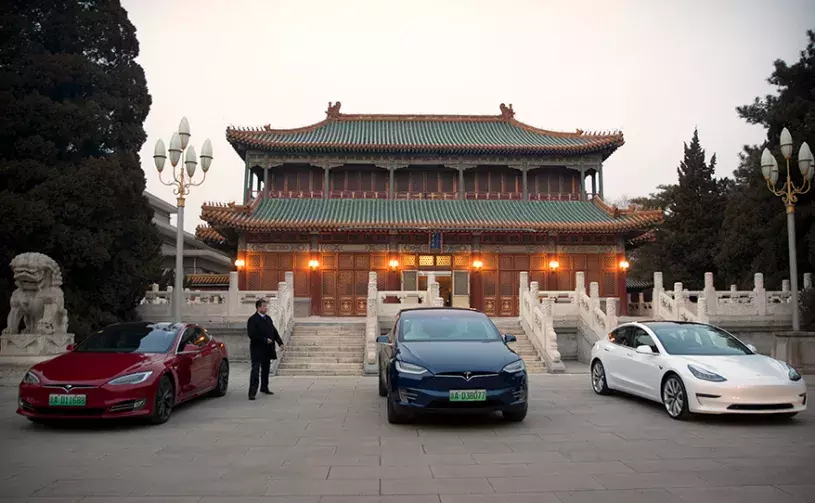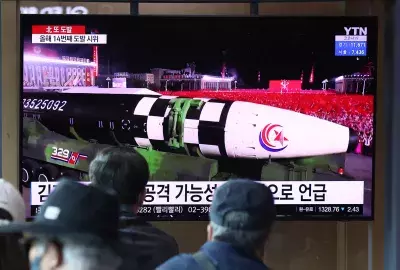
Over the past decade, Tesla has been one of the most successful American companies in the US’s electric vehicle (EV) industry. Not satisfied with dominating the US market, the company turned in 2014 to China to expand its vehicle sales. There, Tesla entered a market with a mix of privately owned companies, joint ventures, and state-owned manufacturers, all operating since 2009 with government support. Indeed, in China, as it did in the United States, Tesla has benefitted greatly from both central and local government subsidies to EV manufacturers and customers. In 2020, China was reported to be the fastest growing market for Tesla, whose new manufacturing base in Shanghai made its vehicles more cost competitive. With China’s government mandating that by 2030, 40 percent of all vehicle sales should be EVs, the future seems bright. But challenges include planned changes in government-supported incentives.
Photo: Tesla vehicles are parked outside of a building at the Zhongnanhai leadership compound during a meeting between Tesla CEO Elon Musk and Chinese Premier Li Keqiang on January 9, 2018 in Beijing, China. (Photo by Mark Schiefelbein - Pool/Getty Images)
Over the past decade, Tesla has been one of the most successful American companies in the US’s electric vehicle (EV) industry. Not satisfied with dominating the US market, the company turned in 2014 to China to expand its vehicle sales. There, Tesla entered a market with a mix of privately owned companies, joint ventures, and state-owned manufacturers, all operating since 2009 with government support. Indeed, in China, as it did in the United States, Tesla has benefitted greatly from both central and local government subsidies to EV manufacturers and customers. In 2020, China was reported to be the fastest growing market for Tesla, whose new manufacturing base in Shanghai made its vehicles more cost competitive. With China’s government mandating that by 2030, 40 percent of all vehicle sales should be EVs, the future seems bright. But challenges include planned changes in government-supported incentives.
Photo: Tesla vehicles are parked outside of a building at the Zhongnanhai leadership compound during a meeting between Tesla CEO Elon Musk and Chinese Premier Li Keqiang on January 9, 2018 in Beijing, China. (Photo by Mark Schiefelbein - Pool/Getty Images)







